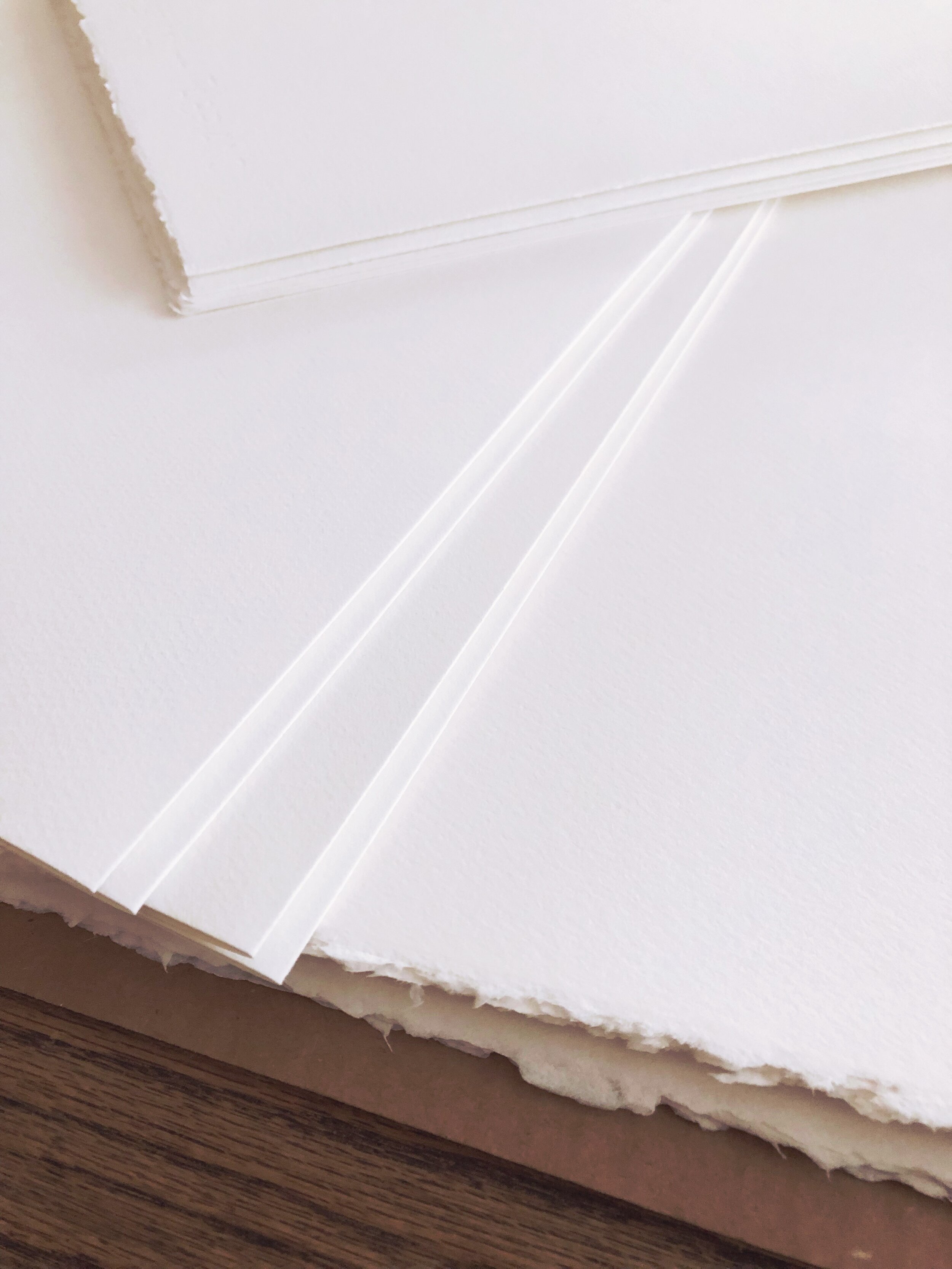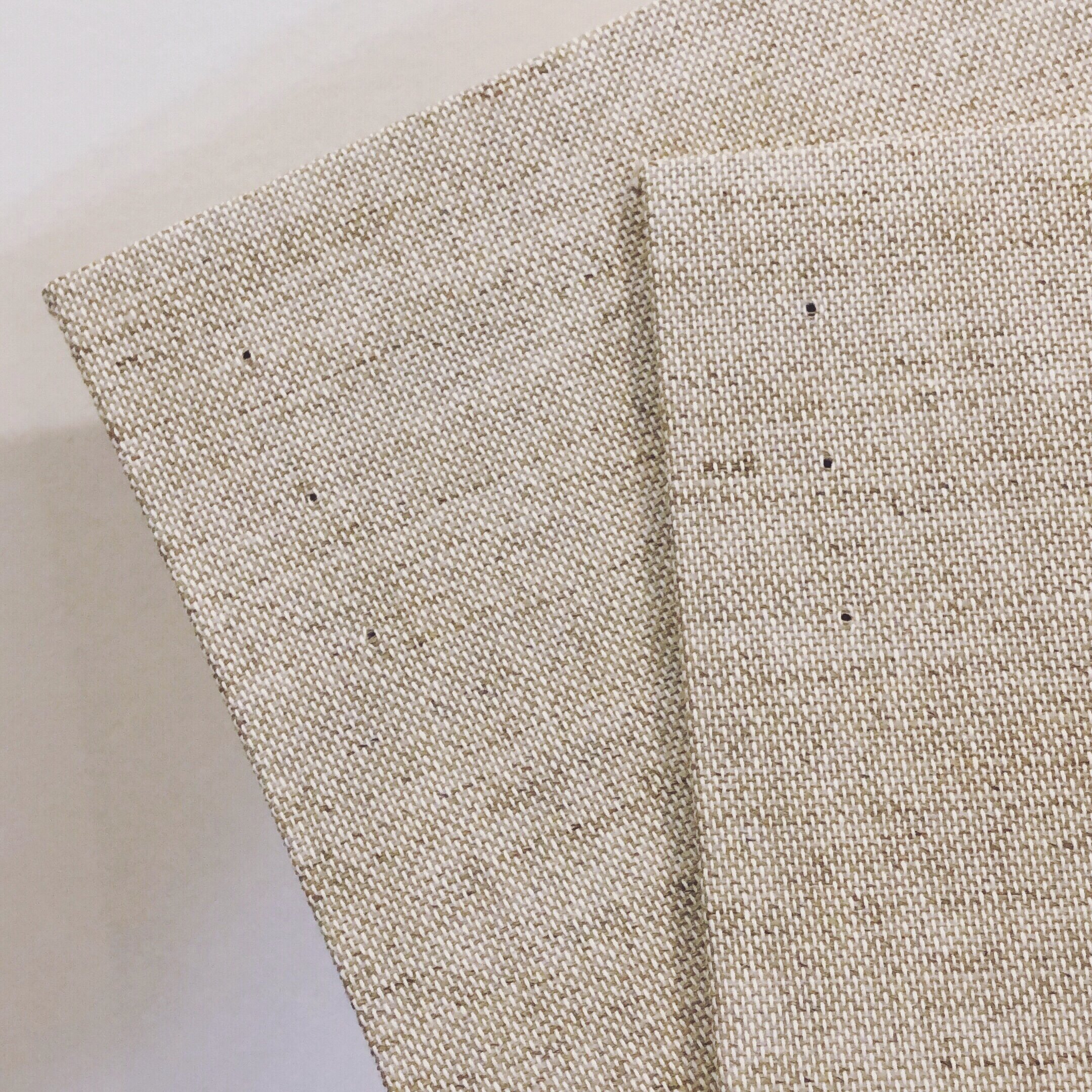Behind The Making of My Handmade Watercolor Sketchbooks
When we see a product for sale, we rarely find ourselves thinking about the thought process behind why and how something was made a particular way. As a maker, I’ve become so much more curious about this, and today, I’d love to share a little more about all the decisions that went into making my handmade watercolor sketchbooks.
The first question I asked myself was, why make a sketchbook?
When I took a poll on Instagram stories, my audience was pretty split between those who prefer to paint on individual sheets/pads vs. those who prefer to paint in a sketchbook. I know everyone has their own preferences, but for me, here are the reasons why I love a good old sketchbook:
A well-used sketchbook, by default, becomes a beautiful record and keepsake of your creative progress and journey - something you can look back on and treasure forever
It’s extremely portable and travel-friendly, allowing you to take it wherever your art leads you
It’s perfect for designating a specific project or type of paintings in one place, i.e. a sketchbook full of botanical paintings
The feeling you get when you’ve finished painting on that last page of a sketchbook is, to me, one of the most satisfying feelings as an artist
On top of all these things, having a sketchbook that’s handstitched and one-of-a-kind makes it even more special. I’ve made my own sketchbooks for years now and I finally decided to make them available for others to enjoy :)
Next, came the paper.
Personally, I think paper is one of the most important supplies to consider when you’re painting with watercolors - more than paint and more than brushes. Those of you who paint often probably already know that using cheaper, lower quality watercolor paper, will not give you the results you want. Your paints will dry duller, you’ll have issues with buckling and overall water flow, and you’ll probably find yourself very frustrated within your first few strokes. On the other side though, professional-grade watercolor paper is not cheap, and trying to find the brand that works best for you can be challenging.
These are the reasons why I wanted to make a sketchbook with various brands of professional-grade watercolor paper. By doing this, the sketchbook would not only consist of high quality, 100% cotton watercolor paper, but it would also allow artists to test out four very popular brands of watercolor paper (Arches, Fabriano, Legion, Winsor & Newton) in an affordable and efficient way. Currently, I don’t know of any other sketchbook out there that allows you to do that.
Last but not least were the decisions on size and style.
Deciding on the right size
I knew I wanted to create a sketchbook that was portable (something small enough to easily fit into a tote or backpack), but still big enough to paint freely in. After doing some research on watercolor paper sizes, I ended up deciding on a 5.5x7.5” sketchbook, which is a size I personally love.
I also had to decide on how many pages to put in the book because this would determine how thick the sketchbook would be. Initially, I tried 8 pages per brand of watercolor paper (making it a 32-page sketchbook), but it felt a little thin, so I ended up making it a 48-page sketchbook instead (with 12 pages of each brand). The thickness felt just right (right under 1”) and I also felt better about offering more pages to paint on.
Choosing a style of bookbinding
I knew I wanted to hand-stitch these sketchbooks, but with so many different types of bookbinding styles out there, I needed to decide which one to go with. In the end, I based my decision on functionality and look - because what can beat a sketchbook that functions well but is also beautiful? :)
In the end, I decided on a coptic stitch binding because:
it allows the sketchbook to lay flat (ideal for painting)
it doesn’t require glue in the binding (less mess + more flexibility)
the exposed binding and thread make it really beautiful
Designing the covers
I initially wanted to use uncovered bookbinding board for a simple and more natural look, but after making a test sketchbook, I thought that adding a linen cover would elevate the look of the sketchbook. After making a second test sketchbook with the linen cover, the decision was made. The fabric cover gave the sketchbook a refined and elegant look that I instantly fell in love with. Based on the feedback I’ve been receiving, I think you might agree!
A limited number of these sketchbooks will be listed in the shop on September 30th, 2019 and my subscribers will be the first to be notified when they’re available! I’m offering a one-time discount as well as some extra goodies for my subscribers for this first batch, so please be sure to subscribe below if you’re interested in snatching one up!
These sketchbooks, from beginning to end, have truly been a labor of love, and I’ve loved every step along the way. I hope you enjoyed learning a little bit more of the thought process that went behind making them!





